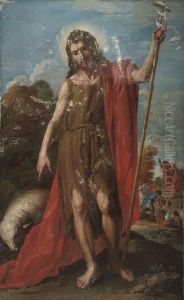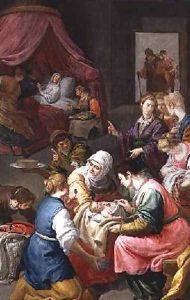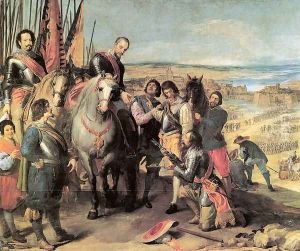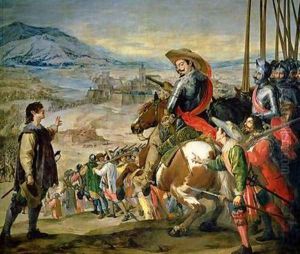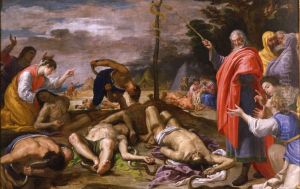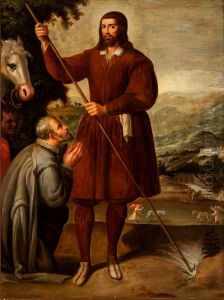Jusepe Leonardo Paintings
Jusepe Leonardo, also known as José Leonardo or Giuseppe Leonardo, was a Spanish painter of the Baroque period, born in Castellón de la Plana, Spain, in 1601. He is not to be confused with the Italian polymath Leonardo da Vinci, as Jusepe Leonardo was active in Spain during the 17th century, a time when Spanish art was flourishing alongside the broader European Baroque movement. His precise training and early influences are not well-documented, but his work exhibits the stylistic traits of Spanish Baroque with a focus on dramatic realism, strong chiaroscuro, and dynamic compositions.
Leonardo's career is marked by his work for the Spanish court, and he is particularly noted for his skill in large-scale historical and religious commissions. His style evolved over time, reflecting the influence of his contemporaries and possibly his exposure to the works of other Spanish masters such as Velázquez. Unfortunately, much of his work was destroyed or lost over time, including major commissions for the Monastery of San Francisco in Madrid.
One of his surviving masterpieces is the 'Battle of Lepanto', created for the Hall of Realms of the Buen Retiro Palace in Madrid. This painting depicts the historic naval encounter between the Holy League, a coalition of Southern European Catholic maritime states, and the Ottoman Empire in 1571. The work is celebrated for its dynamic composition and vivid portrayal of this pivotal battle, which was a significant victory for the Holy League.
Throughout his career, Jusepe Leonardo's contributions were overshadowed by the towering figures of the Spanish Golden Age, such as Diego Velázquez and Francisco de Zurbarán. He did, however, enjoy a certain degree of recognition and patronage during his lifetime, which allowed him to work on prestigious projects. Leonardo's death in Madrid in 1652 marked the end of a career that, while not as well-remembered as some of his contemporaries, played a role in the rich tapestry of Spanish Baroque art. His works, where they survive, provide valuable insight into the themes and aesthetic preferences of 17th-century Spanish painting.
